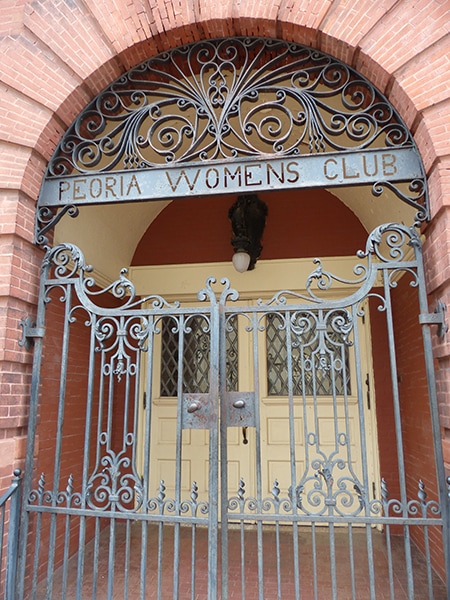Peoria is the oldest community in the state of Illinois. Long before the arrival of European settlers, burial mounds and other artifacts provide evidence of civilization in the Illinois River Valley as far back as 10,000 BC. The Native Americans who settled this region in the 1600s named it Pimiteoui, or “fat lake”—a testament to its plentiful resources.
When French explorers Joliet and Marquette paddled up the Illinois River in 1673, they also saw great potential in its strategic location and natural resources. Seven years later, Fort Creve Coeur arose on the river’s eastern bank, and in 1691, Fort Pimiteoui was built on its western shore—the site of modern Peoria.
The first American settlers arrived here in 1819, and six years later, the Illinois legislature created Peoria County, which initially stretched all the way to Chicago. Peoria was incorporated as a city in 1845, and its subsequent growth would fuel the region.

MADE IN PEORIA
As the Industrial Revolution swept across the nation, business and industry thrived in Peoria. Coal was king, and steamboat and railroad businesses created vast wealth. The first passenger train arrived in 1854, and Peoria soon became the nation’s fourth-largest railroad hub.
Until the onset of Prohibition in 1920, Peoria was also known as the “Whiskey Capital of the World,” producing more bourbon and rye whiskey than anywhere else on earth. Peoria’s distillers and brewers—the so-called “whiskey barons”—prospered, helping to establish many of the magnificent homes, parks, churches, schools and other structures that still stand today.
For more than 150 years, manufacturing drove the regional economy. “Made in Peoria” was stamped on a wide range of consumer products, from bicycles and automobiles to washing machines and barbed wire. When Holt Manufacturing Co. opened a plant in East Peoria in 1909, it forever altered the future of Greater Peoria. Holt merged with C.L. Best in 1925 to form the Caterpillar Tractor Company, which soon became the world’s leading maker of earthmoving machines—and central Illinois’ largest employer.
During World War II, while Caterpillar aided the war effort, researchers in the USDA’s Peoria lab were paving the way for the commercial production of penicillin. Because of their efforts, the U.S. produced millions of life-saving doses just in time for the invasion of Normandy. Today, scientists at the Peoria Ag Lab continue to make discoveries that improve the lives of people around the world.
HISTORY COMES ALIVE
From the Peoria Riverfront Museum, whose multidisciplinary approach connects art, history, science and achievement, to historic Springdale Cemetery, where many prominent Peorians were laid to rest, a diverse collection of institutions bring the region’s storied history to life.
The Peoria Historical Society presents a unique opportunity to view many of the area’s notable structures through its Historic Bus Tours—with certified tour guides providing fascinating stories and information. It also operates a pair of modern-day museums: the Judge John C. Flanagan House, the oldest standing house in Peoria, and the Pettengill-Morron House. Both are listed on the National Register of Historic Places.
From its home in the historic G.A.R. Hall in downtown Peoria, the Central Illinois Landmarks Foundation works to preserve the architectural landmarks that give the region its unique character. Just north of Peoria, Wheels O’ Time Museum offers a walk through the 20th century, featuring displays of antique cars, trains, toys, clocks and more. It is also home to a bronze statue of Peoria inventor and businessman R.G. LeTourneau, along with one of his famous pre-fabricated steel homes, which opened to the public as an exhibit in 2018.
The Peoria Public Library holds a wealth of historic information in its archives, while historic sites and museums dot the region from Princeville to Lincoln—each with intriguing stories of their own.
INSPIRATIONAL FIGURES
Near the Peoria Civic Center in downtown Peoria, a sculpture by Preston Jackson commemorates those who sought freedom on the Underground Railroad, while just blocks away, Jackson’s eight-foot bronze depiction of Richard Pryor honors the late comedian, social critic and Peoria native.
Here in the Land of Lincoln, dozens of historic sites are dedicated to our nation’s 16th president. From his famous anti-slavery speech at the Peoria County Courthouse to the historic Metamora Courthouse where he argued cases as a young lawyer, the Great Emancipator looms large across the heartland.
A wide array of inspirational figures have made Peoria proud, from automotive pioneer Charles Duryea to feminist author Betty Friedan to Hall of Fame slugger Jim Thome. Their stories are the story of Peoria—and of our nation. PP


